This time of year, we get a lot of questions about powdery mildew: “What’s this white stuff on my squash plants?” “How do I get rid of it?” If you live in a coastal community or in humid locations, powdery mildew is part of gardening life.
Powdery mildew is technically a fungal disease that coats leaf surfaces and hampers the leaf’s ability to undergo photosynthesis. It is a dusty gray or white powder that starts in small groupings and spreads to cover the entire leaf or stem. However, different strains of fungi attack different plants. For instance, members of the cucurbit family are attacked by different powdery mildew than those that attack brassicas, roses and other ornamental plants.
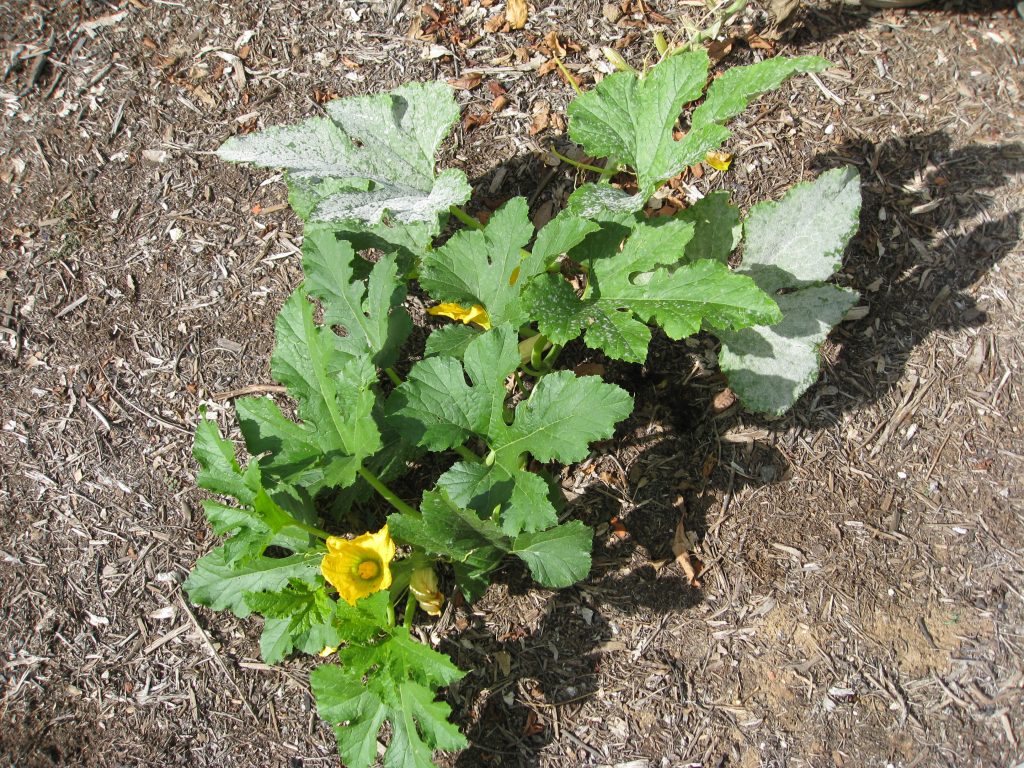
How to Fight It?
There are many commercially available sprays to help combat powdery mildew: Serenade (which is a bacteria that eats the fungi), neem oils with 300-500 ppm, or organic insecticides labeled in the US for treating powdery mildew. But let’s back up to the core issue: imbalance.
Restore Balance
Powdery mildew and other fungal infestations occur when there is an overproduction of one or more types of fungi in the garden. Our goal is to create balance; to increase levels of other fungi and bacteria in garden soils and on leaf surfaces. That helps combat overpopulation of diseases all around.
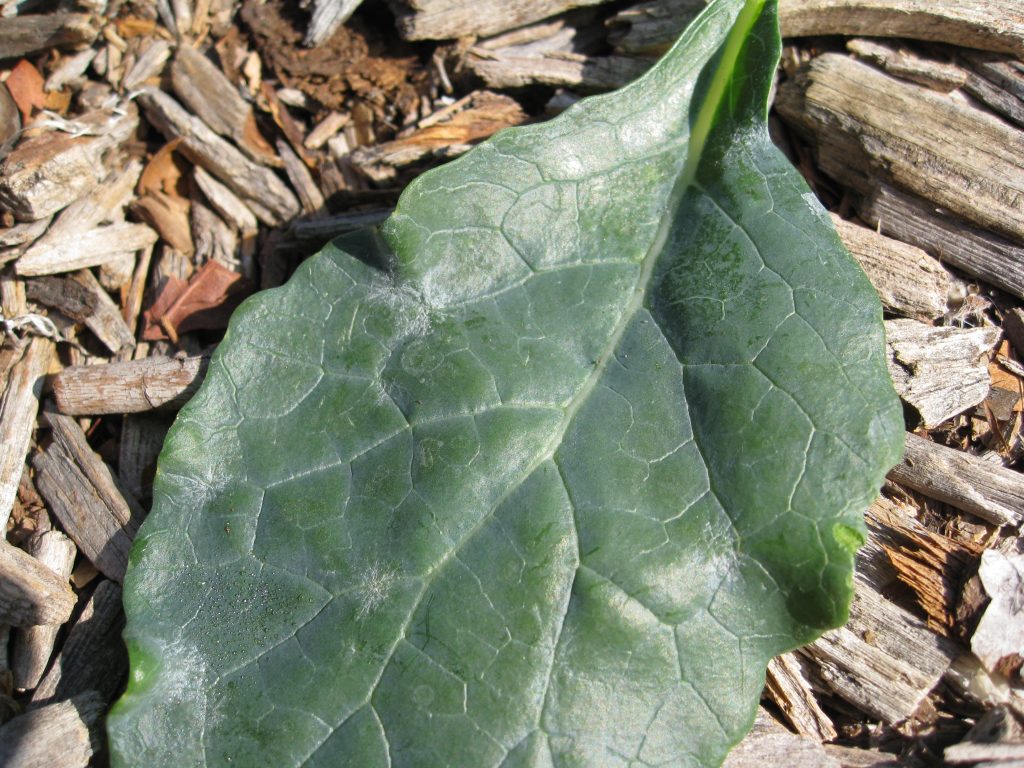
The treatments mentioned above–including home made remedies of baking soda or vinegar–will wipe out some of the fungi, but it does nothing to boost beneficial fungi. Fungicides, even organic, don’t discriminate.
Instead, we recommend spraying leaf surfaces and drenching soils with beneficial fungi and bacteria found in aerated compost teas and biological products like BiotaMax and GP from Custom Biologicals. That’s a better approach.
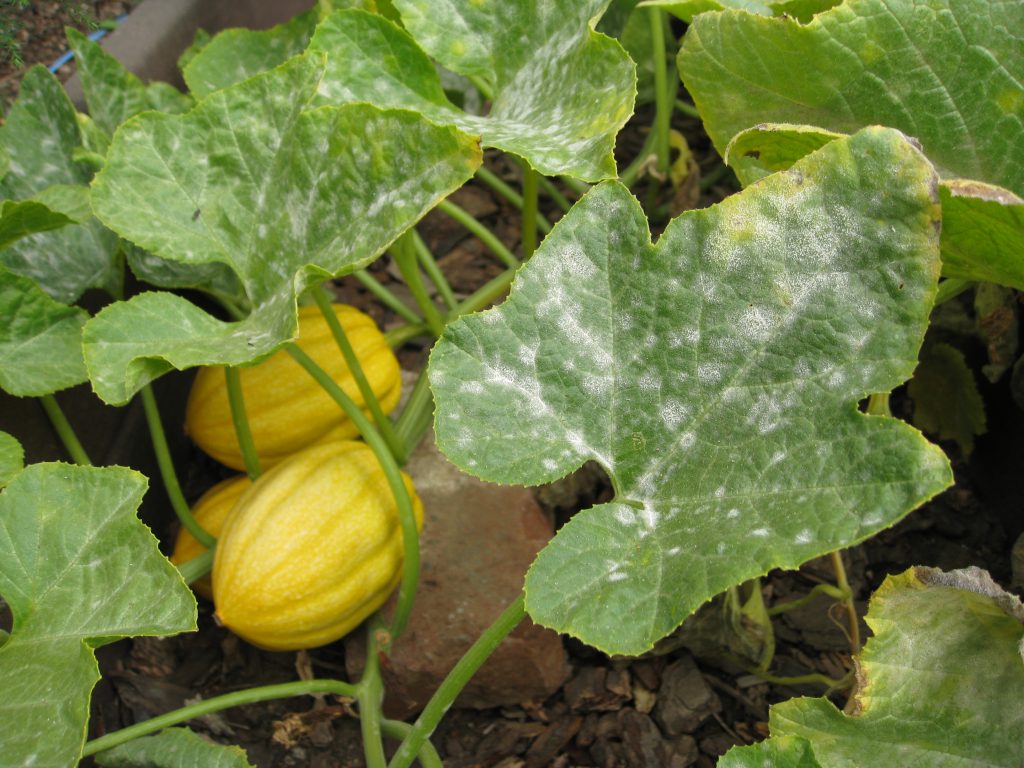
Keep Ahead of the Issue
Prevention is key. Most products don’t really get rid of powdery mildew, but they help keep it at bay. Here are some tips for prevention:
- Remove affected leaves by hand
- Spray biological products before you see damage
- Apply regularly – every 2 weeks if needed
- Don’t compost affected leaves
- Cover soils with non-aeromatic mulch (oak leaves, old chip bark)
- Avoid watering from overhead
Whatever approach you take, be diligent and don’t give up. Many plants keep producing even with powdery mildew infestations. If our plants don’t give up, neither can we!
Resources
Read these other tips on keeping powdery mildew off grape vines.
Listen to this Podcast with Anna Peach, a squash growing expert who shares how she combats powdery mildew.

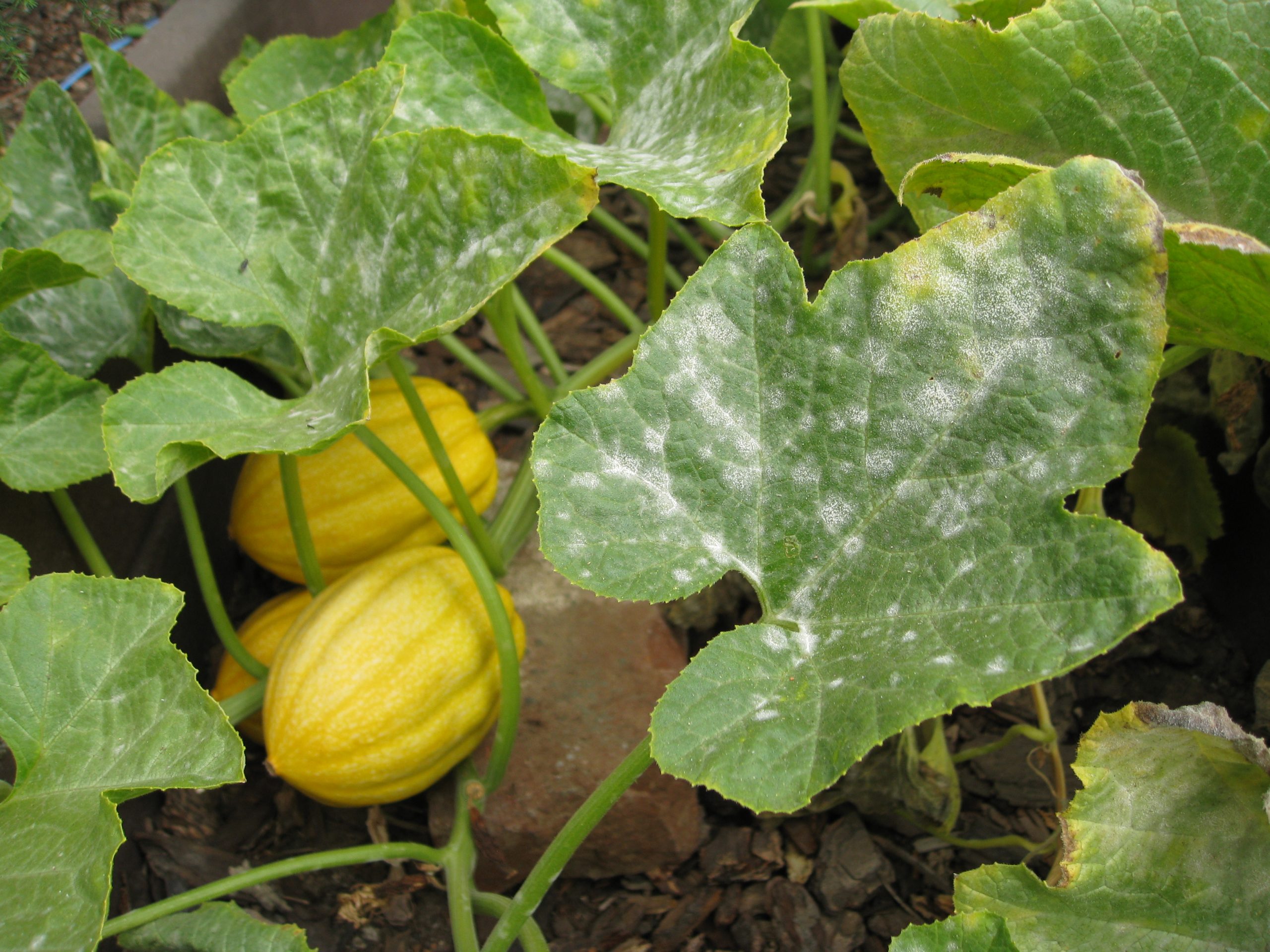

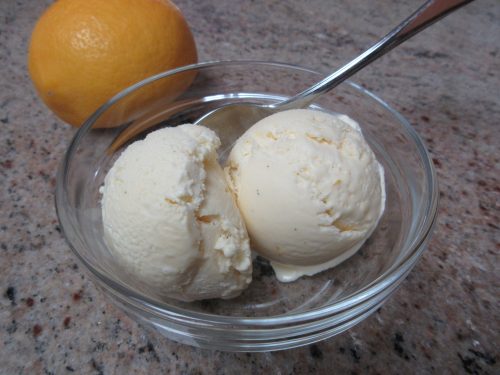
Simple solution is to spray all leaves from around 6wks of age with a 10% whole milk solution diluted with water. Make sure to spray the underside of ever leaf and get all new leaves right in the heart of the plant. Don’t overhead water and repeat after rain.
Do you have any experience with aerated compost teas, or UCCE trial data that shows they are effective ?
In 2015 I experimented with applying (foliar spray and soil drench) fungal-domant compost tea (as much as I could brew it to be) to my tomatoes every two weeks. It completely prevented blight and other things like Septoria leaf spot. I still saw powdery mildew in places, but it didn’t take down any plants. It’s not a very scientific trial, mind you, as I didn’t have a control plant. But given the history of blight in our garden year after year, I took it as a success.
Try not planting oil late spring if you live within 3-4 miles of damp westside. The shops will sell you anything . West of the 405-do not purchase veggie collecting powdery mildew…or/ and plant in a greenhouse!
My iceberg roses were covered with powdery mildew. I cut them back careful not to drop any in soil and sprayed them 3 times with a dr. Earth product for fungus. It is still growing. I will try the old chip bark. Thank you for the tips. I only have this problem in my front yard not my back yard.
Air circulation is a factor, too, Shirley. It may be that hedges or buildings reduce air flow in part of your yard, and that contributes to the arrival of powdery mildew. Keep us posted on what works.